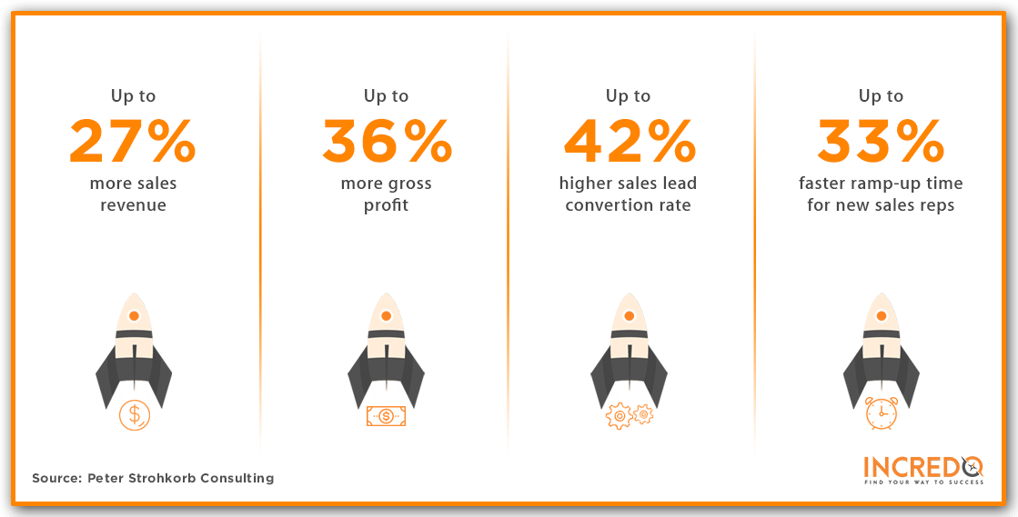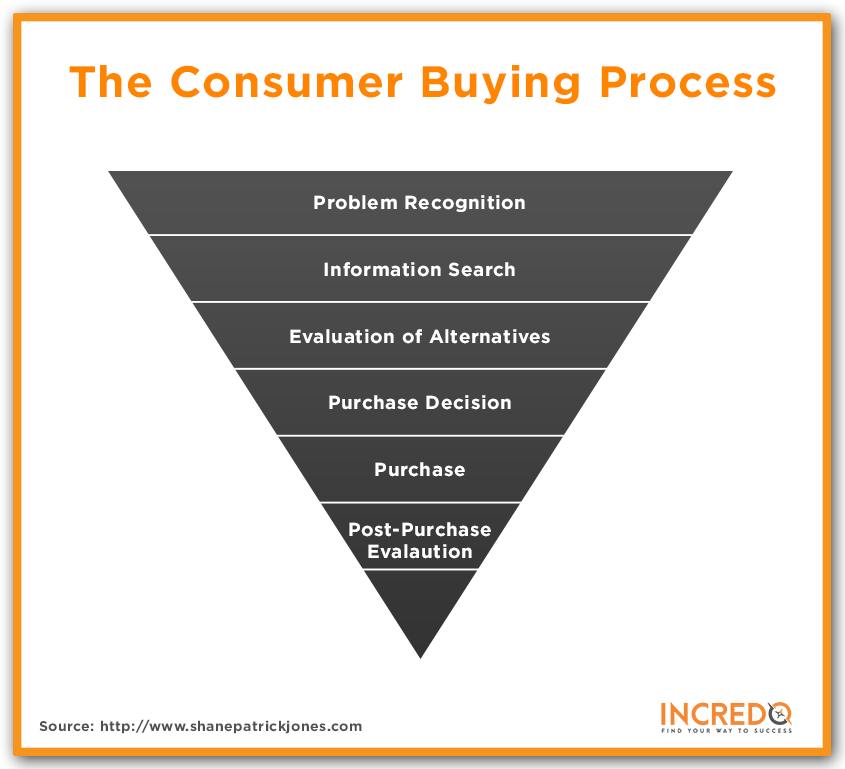Avoid “Bad” Marketing Leads and “Lost” Sales Opportunities [2021 GUIDE]

Avoid “Bad” Marketing Leads and “Lost” Sales Opportunities [2021 GUIDE]
There are many inbound marketing campaigns that successfully generate leads but these leads are not converted to sales. There seems to be a misconception that inbound leads = sales. Many marketers think that leads are ready to buy when they visit the website or download a piece of content. In reality, many of these leads are just beginning their buyer’s journey. They need to be nurtured before they are ready to buy from you. Otherwise, they will be so called “bad” marketing leads and “lost” sales opportunities.
Think of it this way: If you have ever been shopping for a new car, how often have you walked into a dealership that has a good reputation, had a specific model in mind, and told the salesperson “I am here to buy X car, please sell it to me so I can be on my way.” We’re guessing not too often. Few leads ever are driven to your website and purchase your product or service without needing guidance or at least establishing a rapport with your brand. In other words, lead nurturing is all about cultivations of leads that are not ready to buy yet. A good lead nurturing program anticipates the needs of the buyer based on their buyer persona and where they are in the buyer’s journey. Nurturing keeps prospects engaged by providing them with the most relevant content, such as e-books, whitepapers, studies for their particular situation. When implemented correctly, lead nurturing can create powerful brand loyalty well before a prospect is ready to buy. Lead nurturing is about helping buyers along in their journey. However, it is in this nurturing process where many inbound marketing leads get lost in the funnel. Before we come to solving “bad lead generation issue”, let’s get to the root of the problem. You receive junk leads because:
In other words, lead nurturing is all about cultivations of leads that are not ready to buy yet. A good lead nurturing program anticipates the needs of the buyer based on their buyer persona and where they are in the buyer’s journey. Nurturing keeps prospects engaged by providing them with the most relevant content, such as e-books, whitepapers, studies for their particular situation. When implemented correctly, lead nurturing can create powerful brand loyalty well before a prospect is ready to buy. Lead nurturing is about helping buyers along in their journey. However, it is in this nurturing process where many inbound marketing leads get lost in the funnel. Before we come to solving “bad lead generation issue”, let’s get to the root of the problem. You receive junk leads because:
- You haven’t narrowed your audience and try to sell to everybody (the “WHO” issue)
- You promote your product/service in the wrong place (not suitable SM channels or PPC platforms) (the “WHERE” issue)
- Your offer or CTA isn’t clear and don’ address the right issue (the “HOW” issue)
If you are sure that everything with your marketing strategy is OK, then let’s move forward. Here are four main ways to avoid “bad” marketing leads and “lost” sales opportunities.
1. Create alignment between sales and marketing efforts
Smarketing, which is a term coined by HubSpot, is nowadays crucial in any inbound marketing strategy. It is the alignment and connection between sales and marketing departments. This very important component of the inbound marketing model, yet is still hard for many companies to understand and implement. Here are the main benefits of Smarketing for your company: This alignment has to be there so that your sales and marketing teams successfully convert inbound leads. Here are some questions that need to be discussed and decided to begin the alignment:
This alignment has to be there so that your sales and marketing teams successfully convert inbound leads. Here are some questions that need to be discussed and decided to begin the alignment:
- Who will conduct “lead triage” after leads identify themselves?
- Who will handle lead scoring?
- When and how are the leads handed off from the marketing team to the sales team?
- How are leads classified and by whom?
- Is the sales team familiar with the marketing content that generated that particular lead?
The last question is the most frustrating. Sometimes, the sales team does not pay attention to the marketing content that is being offered. Far too often, the sales team does not even read the blog at times. However, this is a tool that can be used for selling on a daily basis. To avoid lost sales opportunities, sales and marketing teams need to be on the same page, in order to better nurture the leads. This is where the importance of Smarketing comes in.
2. Choose the right leads to work with
Many companies do not put a quality check on their new sales leads. All they do is to simply pass every single sales lead to the sales team, even if the prospect is not ready to buy or even if the prospect is not the right fit for the company’s products/services. One of the best ways to avoid bad marketing sales is to start sorting them, so that you don’t waste all of your time nurturing and educating those leads that are not going to become paying customers. Having too many unchecked sales leads is a waste of time for the sales team and causes the company to miss out on legitimate sales opportunities. When your sales team is overloaded with low-quality leads, then you are going to have many lost sales opportunities. To choose the right leads to work with, here are some proven strategies used by many marketing companies:
- Ask lead-qualifying questions
Every single prospect is unique and everyone has their own problems, pain points, interests, etc. So, stop treating them all the same. Asking questions to qualify sales leads is an easy way to prioritize and rank your leads. By asking sales-related exploratory questions, you not only create trust, confidence, but you also get to know about the challenges faced in customer’s business. However, most importantly, you get the chance to do “lead scoring”, which is ranking your sales leads based on how likely they are to buy.
- Ask open-ended questions
Asking lead-qualifying questions is a difficult process, where you need to be very careful. Don’t make the prospect feel defensive by asking too many direct or aggressive questions. Instead, try to ask flexible questions that will help them to talk about their pain points, their challenges and concerns more easily. There are many salespeople that do not listen to the needs of the prospect and just talk about their products/services. Asking lead-qualifying questions also helps you gain an introspective about the overall scenario of the prospect’s business and evaluate how urgently they might be looking to make a purchase decision. Every lead-qualifying question is your chance to hear more from the customer. Get them open up about their problems, challenges and focus on solving their problems.
- Follow-up by phone
One of the most common mistakes made by various companies is that they rely too heavily on marketing automation. When the sales team gets a new inbound sales inquiry through the website or online advertisement, an automated email is sent to the prospect asking them some questions. This automation surely helps a lot, but you cannot totally depend on a fully automated lead qualification process. In order to choose the right leads to work with, sometimes you need to add a human touch. Instead of waiting for people to respond to automated messages, follow-up by phone in order to find out whether that prospect is the right fit for your company’s products. Having a phone call will allow you to have more human interaction and will help you build a relationship and trust.
3. Nurture by stage
The key to a successful nurturing program is to focus on following the lead classifications and then nurture them in incremental steps. If there is no proper classification of leads, then appropriate content will not be able to provoke or even educate your prospects. It will most likely turn them away and you will end up having lost sales opportunities. For example, you might think that a welcome program that provides new inbound leads with helpful information about your company’s products, its features, and your client roster may sound like a great plan, doesn’t it?
No, it’s not!
An inbound lead is not looking to become overwhelmed with a bunch of “we do this and we do that” marketing collateral. When done properly, the inbound lead will receive offers for additional information that is closely related to what they have already downloaded. This will be acceptable and helpful for your new inbound lead. Here are the main buying process stages: It’s crucial to figure out which content fits into which stage of lead nurturing, so you can offer the right content at the right time. Wrong content at the wrong time leads your prospects to confusion and misunderstanding, and that’s why they are either getting lost in your sales funnel or exiting it. Once your prospects are in your sales funnel, nurturing them with helpful, relevant content will move them through each stage of consideration until they are ready to become customers. Nurturing is the safety net for every stage of the buying cycle, helping ensure that no revenue opportunity is missed.
It’s crucial to figure out which content fits into which stage of lead nurturing, so you can offer the right content at the right time. Wrong content at the wrong time leads your prospects to confusion and misunderstanding, and that’s why they are either getting lost in your sales funnel or exiting it. Once your prospects are in your sales funnel, nurturing them with helpful, relevant content will move them through each stage of consideration until they are ready to become customers. Nurturing is the safety net for every stage of the buying cycle, helping ensure that no revenue opportunity is missed.
4. Personalize the nurturing efforts
When you create segmentation among your nurturing lists, it creates an excellent opportunity for you to reach out to prospects with personalized and targeted content, that would be helpful for them. Your emails should be tailored to the prospects’ interests, their job title, location and most importantly their buyer persona. As prospects move further along in through the sales funnel and are about to be handed off to sales, simple plain text emails with a signature from the appropriate sales contact are highly effective. This makes your prospects feel valuable and important to your company. However, this is not to say that you need to go very deep into this and customize your website visitor’s experiences through likes, performance menus, cookies or any other customer tracking information that you can get from various website analytics. Although, through HubSpot and other available tools, it is possible and will one day be a part of lead nurturing best practices. By recognizing prospects’ needs and providing them with the right information based on their interests, prospects and their buying process stage, you can improve the lead nurturing process and avoid bad marketing leads and lost sales opportunities. Are there any other ways to avoid bad marketing leads that turn into lost sales opportunities that you would like to share with us? Please leave them in the comments below. We would be happy to hear from you.

November 18, 2020



Comments